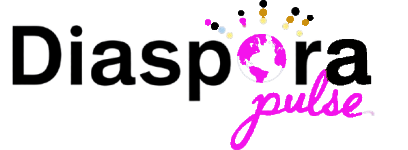Black professionals around the world switch their language patterns many times each day. They adapt their speech from relaxed family conversations to formal corporate presentations. This practice, known as code switching, goes beyond simple vocabulary changes and shows how Black people navigate their cultural identity globally.
Code switching happens when people move between different languages, dialects, or communication styles based on their social setting. Black communities from the streets of Lagos to London’s corporate offices have developed ways of speaking that connect their different cultural worlds. Their adaptations show up in workplaces, social gatherings, and family settings, which creates an array of unique speaking patterns.
The text explains how code switching shows up on different continents. It looks at how this practice helps preserve cultural identity and leads to career success in today’s global workplace. Readers will learn about the many layers of Black communication across the world through these speaking patterns.
The Global Evolution of Code-Switching
The progress of code-switching as a linguistic phenomenon has deep historical roots in many continents. Studies show that four-in-ten Black and Hispanic adults adjust their speech patterns when they interact with people from different racial and ethnic backgrounds. These adaptations show how people have preserved their cultural identity while managing linguistic diversity throughout history.
Historical Origins Across Continents
Code-switching became a systematic practice where people moved between different linguistic varieties in the same conversation. Social processes, not strict grammatical rules, guide these language transitions. This practice has become crucial among educated populations, and 48% of Black adults with college degrees report that they code-switch regularly.
Impact of Colonialism and Migration
Colonial influences changed the linguistic map of Black communities worldwide. European colonialism suppressed thousands of indigenous languages through forced assimilation policies. Language hierarchies continued in postcolonial Africa, where European languages became carriers of “universal wisdom” while African languages were pushed aside.
Regional Variations in Black Linguistic Expression
Black linguistic expression shows amazing regional diversity. Research explains several key patterns:
- Eastern seaboard regions have unique features like the labialization of interdental fricatives
- Urban and rural settings show different linguistic patterns
- Digital communication creates new ways to express
Recent studies using the Corpus of Regional African American Language show how population changes and sociohistorical factors shape dialect features in communities. This variation goes beyond North America. Black immigrants in California speak many languages, with Amharic, Ethiopian, and Niger-Congo languages being the most common.
Cultural Identity in the African Diaspora
Languages are the life-blood of cultural identity within the African diaspora. Africa hosts one-third of the world’s languages. This rich linguistic diversity encompasses multiple language families – Niger-Congo, Afro-Asiatic, Nilo-Saharan, and Khoisan. Each family carries its own unique cultural significance.
Language as Cultural Preservation
African languages have passed down traditions, values, and social norms through storytelling, songs, and proverbs for centuries. Modern media platforms have become unexpected allies in preserving these linguistic traditions. Streaming services now create content in native African languages that increases voices and narratives globally.
Intergenerational Language Transfer
Urban settings present major challenges to intergenerational language transmission. A study of South African urban youth showed how inconsistent information transfer from previous generations created obstacles in developing stable personal identities. This challenge becomes more evident as 93% of African American users report modifying their dialect to work with technological limitations.
Digital Age Impact on Cultural Expression
The digital world has altered how the African diaspora expresses and preserves cultural identity. Cultural expression thrives on these key digital platforms:
- Social media communities help language learning
- Mobile apps support cultural education
- YouTube channels showcase African languages
- Online forums enable cultural exchange
Social media has become crucial for Black youth’s self-expression, social justice, and achievement promotion. Black influence has intensified through digital participation. African Americans lead all demographic groups in smartphone ownership and usage.
Navigating Professional Spaces Worldwide
Multinational corporations face complex linguistic challenges that make code-switching a vital skill for communication. Organizations that support code-switching help their employees share knowledge and build quick interactions across cultural boundaries.
Corporate Culture Across Borders
Global businesses need sophisticated communication strategies because of their multilingual nature. Organizations that support code-switching help develop technical vocabulary and create inclusive knowledge-sharing interactions. Research shows that language fluency helps build mutual understanding and empathy during cross-border negotiations, making Trust a fundamental element.
Industry-Specific Language Adaptations
Each sector demonstrates unique professional code-switching patterns as employees adjust their communication styles to meet specific industry requirements. The core team makes these workplace adjustments:
- Technical vocabulary development
- Context-specific communication patterns
- Cultural sensitivity in professional interactions
- Strategic language choices for different audiences
Global Workplace Communication Strategies
Code-switching in international business requires understanding both verbal and non-verbal communication cues. Teams transfer knowledge more effectively when code-switching happens in a trusting environment with management support. Companies now realize that language proficiency offers strategic benefits, from better cultural understanding to stronger negotiation capabilities.
Code-switching’s benefits go beyond personal interactions and shape organizational success and team dynamics. Companies that invest in language capabilities have an edge in market expansion and strategic collaborations. This approach to linguistic diversity has become vital for businesses in today’s global marketplace.
Social Dynamics and Power Relations
Social dynamics and power relations shape how people choose their language in different contexts. Studies show that African American English (AAE) usage varies substantially based on gender and class, though these patterns aren’t universal.
Class and Educational Influences
Middle-class African Americans use language strategically to set themselves apart from other socioeconomic groups. Middle-class speakers employ vernacular features more subtly and intentionally compared to working-class norms. A person’s educational background plays a vital role. Speakers with higher education levels show greater linguistic flexibility in professional settings.
Gender-Specific Language Patterns
Language choices vary noticeably between genders, with clear differences in AAE usage patterns:
- Male African American celebrities use more AAE-related features than their female counterparts
- Female speakers tend to use language patterns that match Standard American English more closely
- These gender-based patterns remain consistent in both spoken and social media contexts
Community Status and Language Choice
A speaker’s community status and social position affect their linguistic choices. Research shows that people adjust their language based on their status in professional and social spheres. Working-class and middle-class African Americans display distinct linguistic patterns. Middle-class speakers typically use language that resembles Standard American English more closely. This adaptation reflects broader social dynamics and power relations within communities.
Language use and social status share a complex relationship beyond class differences. Research reveals that African American women’s speech styles help us understand the complete spectrum of the African American speech community. These patterns show how language marks identity and helps people direct their way through complex social hierarchies.
Code-switching proves the remarkable linguistic adaptability of Black communities worldwide. This sophisticated practice goes way beyond simple vocabulary changes. It represents a complex interplay of cultural preservation, professional advancement, and social guidance.
Black professionals excel at balancing multiple linguistic identities. They preserve their cultural heritage while succeeding in global workplaces. Knowing how to guide themselves between different communication styles shows their historical resilience and modern necessity. Digital platforms create new opportunities for cultural expression and preservation.
Educational attainment, gender dynamics, and socioeconomic factors shape Black linguistic expression’s future. Middle-class speakers use language strategically. Working-class communities maintain strong cultural linguistic traditions. These patterns show how language connects different worlds and marks identity.
Code-switching helps us learn about the broader Black experience. Communities worldwide maintain cultural authenticity while achieving professional success. This linguistic flexibility symbolizes more than survival – it celebrates cultural heritage and the power to thrive in various global contexts.






